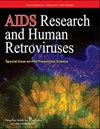中国河北两株具有新型独特重组基因组的 HIV-1 株系的特征。
IF 1.5
4区 医学
Q4 IMMUNOLOGY
引用次数: 0
摘要
在中国,男男性行为者(MSM)感染 HIV-1 的比例迅速上升。除了已知的 CRF01_AE、CRF07_BC 和 B 之外,在 MSM 群体中还发现了越来越多的新亚型。在此,我们报告了中国河北两名通过同性恋接触感染的 HIV-1 阳性受试者的两个新的 URF。基于这两个URF的近全长基因组(NFLG)的系统发育和重组分析表明,这两个URF是源于B型、CRF01_AE和CRF07_BC的第二代重组株。两个URF基因组中的CRF01_AE片段来源于CRF01_AE菌株的第4群,而CRF07_BC片段在系统发生树中与07BC_N聚类。新型 CRF01_AE/CRF07_BC 和 CRF01_AE/B 重组形式的出现表明,在 MSM 群体中持续监测 HIV-1 流行和新型 URF 的重要性。本文章由计算机程序翻译,如有差异,请以英文原文为准。
Characterization of two HIV-1 strains with novel unique recombinant genome in Hebei, China.
In China, the proportion of HIV-1 infections due to men who have sex with men (MSM) has increased rapidly. More and more new subtypes are found among MSM populations besides known CRF01_AE, CRF07_BC, and B. The co-circulation of several HIV subtypes in the same population provides the opportunity to develop a new CRF and URF. Here we reported two new URFs from two HIV-1 positive subjects infected through homosexual contact in Hebei, China. Phylogenetic and recombinant analyses based on the near full-length genome (NFLG) of the two URFs are the second-generation recombinant strains originated from B, CRF01_AE, and CRF07_BC. The CRF01_AE segments in the genome of two URFs originated from cluster 4 of CRF01_AE strains, while The CRF07_BC segments were clustered with 07BC_N in the phylogenetic tree. The emergence of the novel CRF01_AE/CRF07_BC and CRF01_AE/B recombinant forms indicated the importance of the continuous monitoring of the HIV-1 epidemic and new URFs among the MSM populations.
求助全文
通过发布文献求助,成功后即可免费获取论文全文。
去求助
来源期刊
CiteScore
3.10
自引率
6.70%
发文量
201
审稿时长
3-6 weeks
期刊介绍:
AIDS Research and Human Retroviruses was the very first AIDS publication in the field over 30 years ago, and today it is still the critical resource advancing research in retroviruses, including AIDS. The Journal provides the broadest coverage from molecular biology to clinical studies and outcomes research, focusing on developments in prevention science, novel therapeutics, and immune-restorative approaches. Cutting-edge papers on the latest progress and research advances through clinical trials and examination of targeted antiretroviral agents lead to improvements in translational medicine for optimal treatment outcomes.
AIDS Research and Human Retroviruses coverage includes:
HIV cure research
HIV prevention science
- Vaccine research
- Systemic and Topical PreP
Molecular and cell biology of HIV and SIV
Developments in HIV pathogenesis and comorbidities
Molecular biology, immunology, and epidemiology of HTLV
Pharmacology of HIV therapy
Social and behavioral science
Rapid publication of emerging sequence information.

 求助内容:
求助内容: 应助结果提醒方式:
应助结果提醒方式:


